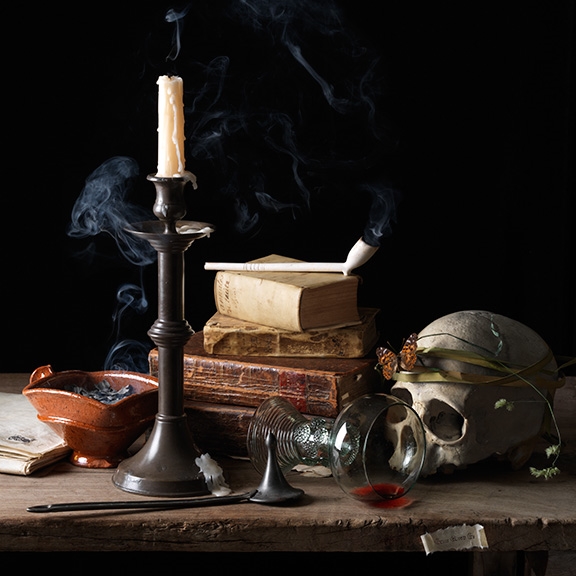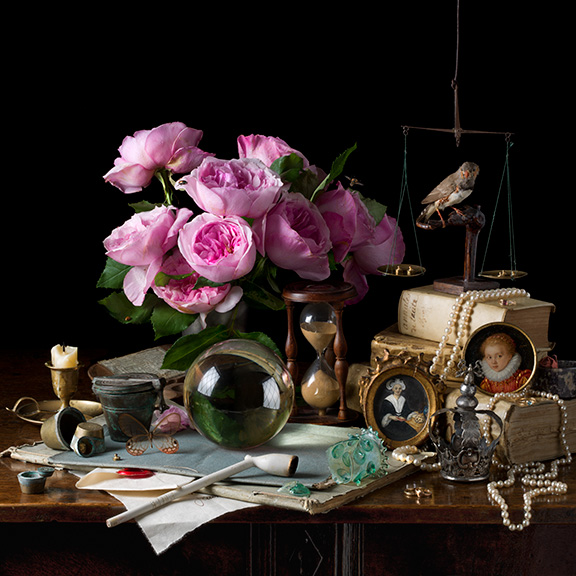"Remember, you too are mortal" - hit me at the top of my form and just as things were beginning to plateau."
Christopher Hitchens
As I gather and reflect on things that connect us, in which we might find imagined connections,
We walk through life with the unshoulderable burden of not knowing death—our unknowable, very real mortality. There’s nothing to know. “Death means you stop being,” thought visionary Jorge Luis Borges. “You cease from thinking.”
“I don’t think of death being terrifying. Infinity is an intellectual problem. Death means you stop being, you cease from thinking, or feeling, or wondering, and at least you’re lucky in that you don’t have to worry. You might as well worry, as the Latin poet said, about the ages, and ages that preceded you when you did not exist. You might as well worry about the endless past as the endless future uninhabited by you. . .
Infinity, yes, that’s the problem, but death isn’t a problem in that sense. There’s no difficulty whatever in imagining that even as I go to sleep every night, I may have a long sleep at the end.”
Borges was right. We don’t suffer death. We suffer the fear of death and dying.
That will not, however, stop us from fretting, fussing, and dripping anxiety in our wake as we drag our eventual corpses through life.
To such a universal question, there are many individual answers, like human communion, which was vital for poet John Keats, or painter Francis Bacon’s self-promise to live brimming with life. George Saunders thought our meaning and legacy existed in kindness. Similarly, Roman Stoic Marcus Aurelius and Oliver Sacks worried about what Aurelius called a “universe-worthy life.”
 Vanitas IV, Dreams, After A.C.” 2015 by Paulette Tavormina. A few centuries ago, humans felt death awareness was a moral imperative. Not only would it remind viewers of life’s evanescence, but it would also invoke the perspective necessary for virtue and contemplation. The contemporary photography of Paulette Tavormina spins a modern view of the Old Masters’ Memento Mori paintings.
Vanitas IV, Dreams, After A.C.” 2015 by Paulette Tavormina. A few centuries ago, humans felt death awareness was a moral imperative. Not only would it remind viewers of life’s evanescence, but it would also invoke the perspective necessary for virtue and contemplation. The contemporary photography of Paulette Tavormina spins a modern view of the Old Masters’ Memento Mori paintings. Perhaps that is why we take a logistical approach to death. As if packing for a trip. Must sort out the health care and wills. To do: caskets, burials, musical selections. Making peace with all and sundry.
Humans find mental clarity and comfort in planning and executing. Susan Sontag kept fierce and constant vigilance over her deteriorating health until the day she died.
Joan Didion sorted, toiled, organized, arranged, and ultimately wrote a book about the death of her husband and daughter. British author Helen Macdonald fixated on training and befriending a goshawk after her father died. In animals—even goshawks—we find warm companions and necessary comforts.
The living has no idea how to “prepare” for death because we’ve never journeyed to the end and never seen it. Don’t know anyone who has. Nevertheless, we push the distraction until death awareness comes upon us. Sizzles and smokes like a spent wick.
The moments we become aware of our death—I mean emotionally, cognitively, intellectually distraught with the numbing truth that there will be a point when we do not exist—are what psychologist Irvin Yalom calls “awakening experiences.” Like Ebenezer Scrooge seeing his tombstone in A Christmas Carol.
“Our existence,” writes Yalom, “is forever shadowed by the knowledge that we will grow, blossom, and inevitably diminish and die.” Our preternatural awareness of this truth arrives through dreams, deep discussion, contemplation, literature, and grief.
In 2010, Christopher Hitchens, the world’s most frustratingly wise contrarian, had an awakening experience when his undiagnosed cancer triggered a terrifying physical malfunction.
I have more than once in my time woken up feeling like death. But nothing prepared me for the early morning in June when I came to consciousness feeling as if I were actually shackled to my corpse. The whole cave of my chest and thorax seemed to have been hollowed out and then refilled with slow-drying cement. I could faintly hear myself breathe but could not manage to inflate my lungs… It took strenuous effort for me to cross the room of my New York hotel and summon the emergency services.
Hitchens’ word choice “came to consciousness” is apt. This deepening awakening to one’s death is an expansion of consciousness.
 “Vanitas VI, Reliquary, After D.B.” 2015 by Paulette Tavormina. Using items of her own and others found in markets and shops, Tavormina’s work, especially her Vanitas series, suggests a painstaking amount of work. Envisioning the space, cultivating a sense of life and death simultaneously, and then carefully positioning the objects.
“Vanitas VI, Reliquary, After D.B.” 2015 by Paulette Tavormina. Using items of her own and others found in markets and shops, Tavormina’s work, especially her Vanitas series, suggests a painstaking amount of work. Envisioning the space, cultivating a sense of life and death simultaneously, and then carefully positioning the objects. What began as an overpowering physical assault was soon found to be esophageal cancer, which Hitchens addressed with his classic vigor, intellectualism, and un-sentimentality, choosing to undergo chemotherapy and write about it.
‘Remember, you too are mortal’—Hit me at the top of my form and just as things were beginning to plateau. My two assets my pen and my voice—had to be the esophagus. All along, while burning the candle at both ends. I’d been ‘straying into the arena of the unwell’ and now ‘a vulgar little tumor’ was evident. This alien can’t wait… The alien was burrowing into me even as I wrote the jaunty words about my own prematurely announced death.
British writer and publisher Robert McCrum suffered a stroke in his early forties. Then, two decades later, a stumble on the pavement made him revisit his unknowable but very real mortality.
Face to face with mortality, McCrum, like Hitchens, contemplates the haze of death surrounding him as he steps forward daily. His language is similar to Yalom’s. Maybe there are only so many ways we can talk about death.
This book reminds anyone who has lived as if they were immortal that there are no privileges or exemptions—no backstage passes. The remorseless passage of time and the unwelcome intrusion of physical frailty must finally confront everyone with the same inevitable reckoning.
We cannot avoid the proximity of death. Which doesn’t mean we think of it all the time. Even when it’s close, we jump in and out of our awareness of it.
 Vanitas III, Reliquary, After D.B.” 2015 by Paulette Tavormina.
Vanitas III, Reliquary, After D.B.” 2015 by Paulette Tavormina. In Katie Roiphe’s elegant book The Violet Hour, detailing the last moment of great writers, a passage about John Updike struck me.
When his children came to visit him at Massachusetts General Hospital, he was, as his youngest son, Michael, put it, ‘a good host.’ The common human impulse to entertain, even in a hospital room, seems to have been especially strong in Updike, though he also saw through the impulse, resented it, and examined it. At the same time, he was writing a poem about lying in the hospital, and making small talk with visiting children and grandchildren.
Like Updike, who played games and wrote poetry, John Keats was also in and out of a total death awareness before his death. In his last known letter before dying of tuberculosis, Keats admitted: “I have a habitual feeling of my real life having passed and that I am leading a posthumous existence.”
 “Vanitas I, Treasures, After E.C.” 2015 by Paulette Tavormina. Not only do Tavormina’s pieces remind us of death, but many items in her work are in the act of dying. Petals drop, leaves slump, candles extinguish. There is movement change, even in stillness.
“Vanitas I, Treasures, After E.C.” 2015 by Paulette Tavormina. Not only do Tavormina’s pieces remind us of death, but many items in her work are in the act of dying. Petals drop, leaves slump, candles extinguish. There is movement change, even in stillness. The death anxiety comes to everyone awake with expanded consciousness. It is the cost of being thus awake. But it need not be negative. It need not be paralytic. Being aware of death doesn’t change our likelihood of death. (Like denying pain does not make it disappear.)
McCrum’s purpose in writing Every Third Thought was to move through anxiety and arrive at understanding. Christopher Hitchens’ intention in chronicling the short remainder of his life (he died in 2011) was to present unsentimental truth as he had always done. Susan Sontag fretted about her illness because she had a ferocity and life that needed letting out.
Irvin Yalom’s “awakening experience” is not just a moment of awareness but a moment of change. He writes:
Although the physicality of death destroys us, the idea of death saves us.
We can galvanize something from death. We must. There is no other way to live. 

